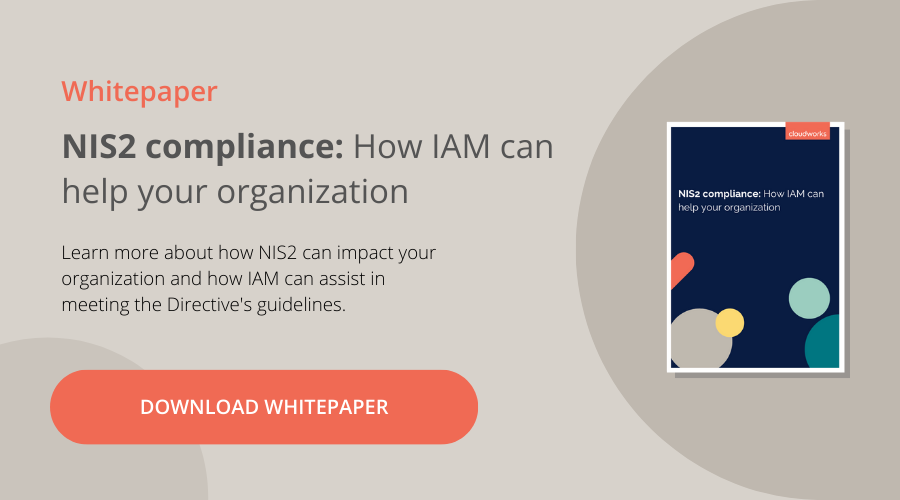10 IAM trends for 2024
Technology is evolving rapidly, and new threats are constantly emerging. Therefore, it's a really good idea to stay updated with the developments in Identity and Access Management (IAM). We have compiled 10 IAM trends that we predict will shape the security landscape in 2024.

Arne Vedø-Hansen
19. December 2023
1. The growing influence of AI presents new challenges
AI has truly come to stay. As its development accelerates, we face new and advanced threats. The possibilities for sophisticated phishing attempts with AI through fake emails, websites, phone messages, and videos have become an even more pressing threat. At the same time, the use of AI Code Assistants increases the risk of erroneous code, which can be exploited by hackers. Hence, it is highly advisable to embark on the new year with a heightened emphasis on bolstering your company's defenses and taking proactive measures to counter the new challenges posed by AI.
2. Increased demands for control in AI-driven applications and services become necessary
Many applications and services embrace AI, offering new exciting opportunities. By integrating AI across various applications and services, large datasets can be effectively managed, and complex tasks performed. However, this is not without risk, as many digital assets are placed in the same 'basket'. Therefore, it will also be crucial to maintain detailed control over who has access to the system. By implementing an IAM solution, you ensure that access to the system is given only to the right people, helping to prevent potential misuse.

3. AI becomes an important aid for better protection and personalized user experiences
During 2024, we will experience AI becoming a central player in the protection against cyber threats. Artificial intelligence can help proactively detect and manage threats and dynamically evolve in step with them. In addition, AI can lend a hand in complying with and assisting in relation to the increasing number of regulations. AI will also be used more extensively to help with the setup of new services based on best practices, making the entire implementation process more efficient and smart. Additionally, AI will contribute to improving the user experience by creating more personalized interactions.
4. More and more regulations are on the way
The number of regulations that companies must adhere to is steadily increasing. This also applies to 2024, which will include, among other things, the implementation of the EU cybersecurity directive, NIS2, in the fall. This also means that companies must ensure they stay updated with a wide range of different – often complex – requirements. It is worst for those companies that hesitate and therefore risk falling behind and facing increased challenges and consequences.
→ Are you unsure how your company meets the requirements from NIS2? Then download our whitepaper on NIS2 and IAM!
5. Heightened awareness of internal threats
Throughout 2024, we will see an even greater focus on internal threats, especially regarding the risk from employees who are either unreliable or have more access than necessary, which can lead to unintended damage. This underscores the need to address the company's security position.
By implementing Least Privileged and No Standing Privileges, your company ensures that access rights to important systems and data are limited to the necessary minimum and that no access rights remain permanent. This helps to ensure that your company's digital infrastructure remains robust and protected against internal threats.
6. Identity verification becomes more widespread
It is crucial to be able to verify an identity, whether it concerns onboarding new employees in your company (especially those who will work remotely), in relation to new customers, or when new users access a service.
We expect that instead of basing trust solely on information from the individual, identity verification will become even more widespread in 2024. This protects against fraud and establishes a reliable basis for interactions with both employees and customers.
→ You can read more about Cloudworks Identity Proofing here!
7. Identity infrastructure as a target for cyber attacks
As identities gradually become important for company security and as cyber threats continuously evolve, identity infrastructure will increasingly become the primary target for cyber-attacks. Therefore, it is crucial that your company plans and prepares for this threat landscape. A sensible way to start is by conducting a thorough risk assessment. This provides a good overview of the potential risks and threats that your company faces.
8. Biometric Authentication
During 2024, we expect that biometric authentication will become even more widespread. This includes facial recognition, fingerprint, and iris recognition. The development will be a positive step towards more secure and user-friendly authentication methods.
However, with the increased spread of biometric authentication, there is also a greater risk of attacks targeted at the infrastructure, both hardware and software, that the authentication methods use. Therefore, it is crucial to meet this challenge with strengthened security efforts and stay one step ahead of potential threats.

9. Zero Knowledge Proof
Within IAM, we expect that the Zero Knowledge Proof method will gain further popularity in 2024. The essence of Zero Knowledge Proof is to verify specific information about a user without revealing more information than what is strictly necessary for the particular service.
For example, a bartender only needs to know if a person is old enough to buy alcohol, but not their exact age or birth date. This promotes a safer environment by minimizing the risk of unauthorized access and data leaks.
Zero Knowledge Proof is a crucial step towards strengthening IAM processes and ensuring that only the necessary information is shared in digital transactions and interactions.
10. Secure user login is essential
There are still many services that have not implemented a proper solution to secure user logins. Local accounts, weak passwords, and a lack of multi-factor authentication (MFA) are still widespread challenges. Therefore, let us hope that 2024 will be the year when the implementation of Single Sign-On (SSO) with MFA really becomes the norm.
By combining SSO and MFA, your company can effectively close the security gaps that arise from the use of insecure user logins and protect your digital identities.
→ Has your company not implemented a secure solution for user logins? Read more here!












